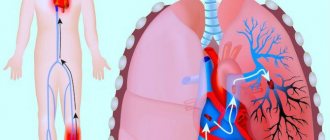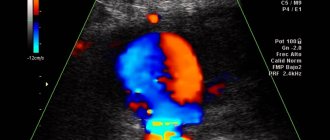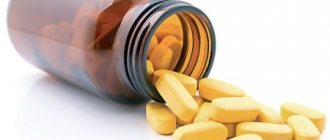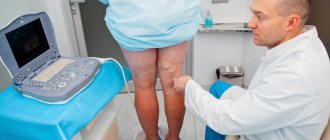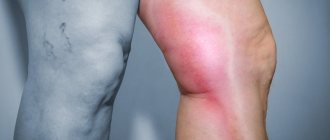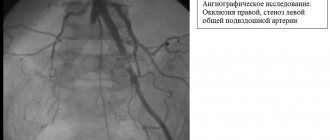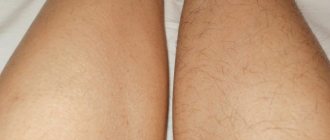- home
- Articles
- Food for thrombosis
Thrombosis is a condition in which the normal flow of blood is obstructed by a clot that completely or partially blocks a vein. The lesion is usually localized in the legs, since the blood supply to these parts of the body is poorer. The disease is insidious in that for the time being it does not manifest itself in any way, but at one moment a person can die from thromboembolism (a blood clot detached from the walls of a vein). The larger the clot, the greater the risk.
Patients with thrombosis should not panic: not every blood clot always leads to death. You need to reconsider your lifestyle and strictly follow your doctor’s instructions.
Your task is to achieve 2 main goals: preventing the growth of a blood clot and accelerating its resorption. Adequate drug therapy and physical activity are the main factors for a speedy recovery.
But nutrition plays an equally important role during thrombosis .
“With Taste ,” based on the recommendations of phlebologists, has compiled a list of 5 food groups that should not be consumed if you have deep vein thrombosis .
Nutrition for thrombosis: general information
Patients, first of all, need to develop a new drinking regimen, in which the amount of liquid drunk (primarily water) should reach the established norm (1.5-2 l). Foods high in vitamins C and K should be removed from your daily diet.
Expert opinion
Treatment of thrombosis includes taking anticoagulants, in particular Warfarin. This drug involves following a strict diet that limits the amount of foods rich in vitamin K. First of all, green tea, spinach, lettuce, cabbage, and beef liver.
Vascular surgeon, phlebologist
Osipova Ekaterina Yakovlevna
Some healthy foods can only be eaten in limited quantities, since the vitamins in their composition not only have a beneficial effect and promote overall recovery, but also increase blood clotting, which is undesirable in this case. We are talking about lettuce leaves, rose hips, tomatoes, various types of cabbage, liver and other offal, currants. These foods should be limited in the diet until the risk of thrombosis is reduced.
Statistics on the localization of thrombotic lesions
Proper nutrition for thrombosis (Thrombosis) completely excludes smoked, salty, and sweet foods. The patient should consume more plant foods - vegetables, fruits, vegetable oils, legumes and grains. Many people are interested in whether it is possible to add vinegar to food, eat pepper and garlic, or hot horseradish, if the threat of disease is minimized? Doctors do not prohibit this food, but there is a taboo on alcoholic drinks and spicy foods.
The diet for thrombosis is based on a diet enriched with polyunsaturated fats, vitamin E and fiber. Preference should be given to steamed, stewed and boiled dishes. Products can also be sliced and baked. The amount of food of animal origin must be reduced.
What are the benefits of foods that are the main sources of fiber? Fresh vegetables and fruits improve the elasticity of the walls of blood vessels.
Honey is very useful for varicose veins
5. Garlic and fresh onions will help strengthen the walls of blood vessels. They should be eaten as often as possible.
Fresh onions and garlic for varicose veins
In addition, they have a medical effect, preventing the formation of thrombotic clots and reducing blood viscosity.
6. Greens (parsley, etc.) and various seasonings also have a good effect against blood clots. The leading effect is exerted by components that make the blood more fluid, which facilitates its flow through the vessels.
7. There are particularly important ingredients for diet and varicose veins. These are sprouted wheat and rye, beans, buckwheat, peas, corn and olive oil, lettuce and green onions. The nutrients here will help in the fight to maintain the elasticity of the walls of venous vessels.
Nutrition for thrombosis: recommendations
Nutrition for vein thrombosis: what not to eat? First of all, you need to stop drinking coffee or alcohol regularly. Sausages, citrus fruits, baked goods, smoked meats, desserts, canned food, dairy products, and currants should disappear from the daily menu.
The deep vein thrombosis diet aims to reduce the consumption of foods that increase blood clotting rates. The patient must, on the contrary, strive to keep the blood liquid.
The diet is based on the consumption of lean meat, fresh vegetables and fruits. The foundation of the diet for vein thrombosis consists of products with Omega-3 and vitamin E.
!
Bakery products should be excluded from the diet.
Vitamin E prevents the breakdown of poly- and monounsaturated fats. It is taken in the form of capsules or tablets as part of a prescribed regimen. Vitamin E is also found in concentrated form in sunflower seeds, sesame and flax seeds, sprouted wheat sprouts, and avocados. Oils like flaxseed and olive are also useful, but only cold-pressed.
Saturated fats should be limited. If you have problems with blood vessels, you should eat chocolate (75% or more), lard, meat, high-fat hard cheeses, and butter. It will be difficult for the body to process these products compared to quickly digestible sugar, but this source of energy for the cell is much better.
Refined flour, sugar, carbonated drinks, sugary cereals and all other simple carbohydrates contribute to the accumulation of excess fat and fluctuations in blood glucose levels. The more sweets you eat, the more your blood viscosity increases, and this can lead to problems with blood clots.
Expert opinion
It is not recommended to abruptly stop eating foods that you ate before the onset of the disease. Instead, doctors recommend introducing new dietary rules gradually so that the body gets used to them and does not experience stress.
Vascular surgeon, phlebologist
Osipova Ekaterina Yakovlevna
Drugs for thrombosis
To cleanse blood vessels and normalize blood circulation, medications for blood clots are taken. Despite the fact that blood clots are a normal process designed by nature to protect against blood loss, blood clots can form when they are not at all necessary. As a result, blood flow cannot move freely, creating a life-threatening situation.
Modern pharmaceuticals can destroy existing blood clots and prevent the development of new clots.
It is important to consult a specialist in time and take medications at an early stage of the pathological process, when it responds well to treatment. Venous thrombosis is usually localized in the vessels of the lower extremities, veins.
Thrombosis of the vertebral artery, aorta, intestine, hemorrhoidal, and upper extremities is also distinguished. Mesenteric thrombosis is typical for elderly and middle-aged people.
When blood clots grow, the lumen in the vessel closes and blood circulation stops. This condition is called acute thrombosis. There is a danger that one of them will break away from the wall and move along the vascular wall, with the risk of blocking the heart or blood vessels in the lungs, which will lead to sudden death.
Medicines against thrombosis
An effective drug must perform one of the following functions:
- destroy existing clots;
- restore blood circulation;
- normalize blood clotting by blocking platelet activity.
External means cope with these tasks. The most popular are Heparin ointment, Lyoton 1000, Venen gel, etc. They are able to penetrate even into the deep layer of tissue, relieve inflammation and normalize blood circulation. The doctor may also prescribe tablets that you can take while also using ointments.
These include:
- Warfarin;
- Cardiomagnyl;
- Butadion;
- Troxerutin.
Each drug has side effects, especially if you have previously had problems with the gastrointestinal tract, so they should only be taken under the supervision of a doctor.
Prevention of thrombosis of the legs and other vessels includes developing an exercise program together with a specialist, giving up bad habits, and getting enough rest, especially after eating.
Remedies for blood clots in blood vessels prices in the pharmacy
After your doctor gives you a list of medications for thrombosis, you can buy them at the pharmacy. To find out where the best price is, enter the name of the drug into the search on the Apteka24 website. We have combined pharmacy branches from different cities of Ukraine in an online version so that you can take advantage of the best offer!
Diet for thrombosis: menu
Food for thrombosis and varicose veins should be balanced and selected specifically to thin the blood. During an exacerbation of the disease, the diet is more strict, but on ordinary days you can eat the same food that is healthy for any healthy person.
Menu options for three days
First day. You can cook bran for breakfast. For an afternoon snack you can eat permitted fruits, at lunchtime - soup without fried vegetables (frying is allowed only in olive oil). In the evening, stewed vegetable stew and herbal decoction are offered.
Second day. You can have buckwheat porridge for breakfast. For a snack before lunch, fruits or steamed vegetables are suitable. For lunch you can eat fish soup, as well as berry jelly. Potatoes stewed with vegetables are suitable for dinner.
The third day. For breakfast you can make dark rice porridge and chicken breast. Nuts (cashews) are suitable for a snack, and a vegetable salad for lunch. For dinner, pumpkin stew with berries and a herbal drink are offered.
Approximate menu for several days
Eating habits form quickly, and it is quite difficult to give up your usual diet. A pre-prepared menu for the week helps to simplify the process, in which dishes for each meal will be precisely defined.
Monday
| Breakfast | Snack | Dinner | Afternoon snack | Dinner |
| Oatmeal with dried fruits, weak tea | Ryazhenka | Wheat porridge with lean boiled beef, vegetable salad | Raspberries or strawberries, low-fat kefir | Boiled chicken fillet, cucumber and tomato salad |
Tuesday
| Breakfast | Snack | Dinner | Afternoon snack | Dinner |
| Whole grain toast, lemon and ginger tea | Zucchini, baked or steamed | Baked fish, side dish of steamed vegetables | Ginger tea, dried fruits | Stewed vegetables, dried fruits or baked apple with honey |
Wednesday
| Breakfast | Snack | Dinner | Afternoon snack | Dinner |
| Oatmeal muesli with fresh berries | Citrus | Steamed chicken cutlets, porridge, vegetable salad | Vegetable salad with feta cheese | Boiled chicken, vegetable salad with flaxseed oil |
Thursday
| Breakfast | Snack | Dinner | Afternoon snack | Dinner |
| White bread toast, low-fat cheese, homemade compote | Vegetables cooked in a steamer | Vegetable soup, boiled chicken breast | Kefir or yogurt | Curd casserole with berries |
Friday
| Breakfast | Snack | Dinner | Afternoon snack | Dinner |
| Curd mass with dried fruits, kefir | Natural low-fat yogurt | Salmon or red fish soup, buckwheat with vegetables | Tea, crackers, dried fruits | Vegetables with fish, tomatoes and cucumbers |
Saturday
| Breakfast | Snack | Dinner | Afternoon snack | Dinner |
| Biscuits, tea | Baked vegetables | Buckwheat soup with vegetables and chicken, croutons | Sourdough or natural yogurt | Sandwich with feta cheese and tomato; vegetable stew |
Sunday
| Breakfast | Snack | Dinner | Afternoon snack | Dinner |
| Natural yogurt | Fresh fruits | Lenten soup; hard-boiled egg, black bread | Baked vegetables, kefir | Cottage cheese casserole with raisins |
It is recommended to cook food one time at a time. Several times a week you can use vegetable oil during cooking; preference should be given to flaxseed, sesame or olive oil. They also season salads: mayonnaise and store-bought sauces are prohibited.
Nutrition for deep vein thrombosis of the lower extremities
A diet for deep vein thrombosis of the lower extremities helps to lose weight, reduce blood viscosity, and improve stool. The vessels become cleaner, and their walls become more elastic. In general, metabolic processes in the body are activated.
!
The diet is drawn up by a doctor who prescribes medications and takes into account their compatibility.
The diet for problems with the veins of the lower extremities is introduced only for three to four weeks, and during this time a positive result can be achieved. Some products can reduce the effectiveness of selected medications.
The ratio of venous and arterial thrombosis
Nutrition for thrombosis of the lower extremities involves eating onions (raw or cooked), garlic, berries, ginger, fish oil, and vegetables. Lean meat (boiled or steamed) can be eaten three times a week.
!
It is necessary to completely exclude from the diet those foods that impair blood circulation, stagnation of venous blood occurs and blood clots form.
If you have problems with blood clots, you need to completely eliminate sugar, smoked foods, sweets, canned food, alcohol, juices, processed foods, and coffee.
To prevent diseases associated with the formation of blood clots, prevent congestion and improve blood circulation in the legs, you can use special creams and vitamin complexes.
Fully or partially limited products
A diet for thrombophlebitis involves excluding from the diet strong meat broths, goose, duck, boiled and smoked sausages, fatty meats, mayonnaise, canned meat and fish, bacon, ham, animal fat, confectionery, especially with cream, salty and fatty cheeses, baked goods, as well as high-fat cream and cottage cheese, yogurt with additives, baked milk, pasta, legumes, fried chicken eggs.
The consumption of smoked meats, pickles, and marinades is not allowed. The consumption of salt and salty foods is limited. It is prohibited to drink black tea, coffee, or any alcohol-containing drinks.
Table of prohibited products
| Proteins, g | Fats, g | Carbohydrates, g | Calories, kcal | |
Vegetables and greens | ||||
| canned vegetables | 1,5 | 0,2 | 5,5 | 30 |
Snacks | ||||
| potato chips | 5,5 | 30,0 | 53,0 | 520 |
Flour and pasta | ||||
| vareniki | 7,6 | 2,3 | 18,7 | 155 |
| dumplings | 11,9 | 12,4 | 29,0 | 275 |
Bakery products | ||||
| sliced loaf | 7,5 | 2,9 | 50,9 | 264 |
| buns | 7,9 | 9,4 | 55,5 | 339 |
Confectionery | ||||
| cookie | 7,5 | 11,8 | 74,9 | 417 |
| cake | 3,8 | 22,6 | 47,0 | 397 |
Cakes | ||||
| cake | 4,4 | 23,4 | 45,2 | 407 |
Chocolate | ||||
| chocolate | 5,4 | 35,3 | 56,5 | 544 |
Raw materials and seasonings | ||||
| mayonnaise | 2,4 | 67,0 | 3,9 | 627 |
Dairy | ||||
| milk | 3,2 | 3,6 | 4,8 | 64 |
| cream 35% (fat) | 2,5 | 35,0 | 3,0 | 337 |
| sour cream 30% | 2,4 | 30,0 | 3,1 | 294 |
Cheeses and cottage cheese | ||||
| cheese | 24,1 | 29,5 | 0,3 | 363 |
Meat products | ||||
| fried pork | 11,4 | 49,3 | 0,0 | 489 |
| fatty pork | 11,4 | 49,3 | 0,0 | 489 |
| pork fat | 1,4 | 92,8 | 0,0 | 841 |
| bacon | 23,0 | 45,0 | 0,0 | 500 |
Sausages | ||||
| smoked sausage | 28,2 | 27,5 | 0,0 | 360 |
| smoked sausage | 9,9 | 63,2 | 0,3 | 608 |
Bird | ||||
| duck | 16,5 | 61,2 | 0,0 | 346 |
| goose | 16,1 | 33,3 | 0,0 | 364 |
Fish and seafood | ||||
| fried fish | 19,5 | 11,7 | 6,2 | 206 |
Oils and fats | ||||
| cooking fat | 0,0 | 99,7 | 0,0 | 897 |
| rendered pork fat | 0,0 | 99,6 | 0,0 | 896 |
Alcoholic drinks | ||||
| white dessert wine 16% | 0,5 | 0,0 | 16,0 | 153 |
| vodka | 0,0 | 0,0 | 0,1 | 235 |
| cognac | 0,0 | 0,0 | 0,1 | 239 |
| liquor | 0,3 | 1,1 | 17,2 | 242 |
| beer | 0,3 | 0,0 | 4,6 | 42 |
Non-alcoholic drinks | ||||
| cola | 0,0 | 0,0 | 10,4 | 42 |
| coffee | 0,2 | 0,0 | 0,3 | 2 |
| Pepsi | 0,0 | 0,0 | 8,7 | 38 |
| black tea | 20,0 | 5,1 | 6,9 | 152 |
| energy drink | 0,0 | 0,0 | 11,3 | 45 |
| * data is per 100 g of product | ||||
Diet for thrombosis of hemorrhoids
With such damage to these nodes, an adjusted food intake system should help improve intestinal motility and prevent constipation. It is very important that the stool is maintained normally. If the regimen is violated, the disease can progress to acute hemorrhoids (Haemorrois).
The diet requires sufficient fiber to regulate intestinal function. It is necessary to achieve lower cholesterol levels through foods with a high content of soluble plant fibers.
!
The menu should include legumes, offal, fruits and seaweed.
Pectin substances belong to the group of soluble substances. When dissolved, they swell and absorb toxins from the intestinal walls. Due to this, glucose absorption slows down, and as a result, blood sugar levels decrease. Microflora breaks down pectins in the large intestine, thereby ensuring the required level of acidity.
Diet for thrombosis: products
How is thrombophlebitis diagnosed?
Timely diagnosis of the disease almost always allows one to achieve positive treatment results. To identify superficial and especially deep thrombosis, several methods are used at once:
- Rheovasography. This technique allows you to assess the state of blood flow in a specific organ or section of the circulatory system.
- Tomography or MRI. This deep vein examination helps identify disease hidden within the lower extremities.
- Angiography. Includes invasive examination by highlighting the veins. This technique allows you to examine the smallest damage to blood vessels and take timely treatment measures.
- Ultrasound. Ultrasound scanning of veins and vessels allows you to see small blood clots, distinguish damage to veins, etc.
With an integrated approach, it is possible to create a comprehensive picture of the disease and its treatment. To make a diagnosis, we recommend contacting a phlebologist or vascular surgeon. Examination using equipment cannot be neglected, since superficial inflammation often passes into the deeper layers without symptoms.
Visual inspection and palpation are important. An experienced doctor is able to diagnose superficial thrombophlebitis during a personal examination. Often, at an appointment, the bilateral nature of the disease is revealed, when thrombosis is detected in both legs.
Products
The patient is prescribed food containing polyunsaturated fats. Ideal products in this regard are fish oil and flaxseed oil. The minimum consumption of fish is twice weekly. The diet must include trout, herring, mackerel and other fish caught in the natural environment.
What you can eat:
- the consumption of legumes, sunflower seeds, pumpkin dishes is allowed,
- dried fruits,
- Herbal infusions (chamomile, nettle) have a beneficial effect on the body in case of the disease in question,
- When choosing tea, give preference to green.
What other foods should the patient eat? Vegetable soup, potatoes, vegetables, berries and fruits will have a positive effect on your health. Garlic, onions, avocado and sprouted wheat should also be included in the mandatory list of products.
Diet and varicose veins. What diet to choose in Moscow?
If you want to follow a specific nutrition plan with a daily meal schedule, you can choose a specific diet, there are many of them. The choice will be based on existing diseases (especially the gastrointestinal tract), taste preferences and lifestyle. A nutritionist will help you create a menu; he will take into account all the characteristics of the body, so it is better not to simply take the diet you like from reference books or the Internet.
Consultation with a nutritionist
Such a diet may not have the best effect on the condition of your veins and the whole body. European experts report significant health problems arising from an incorrectly chosen diet. Therefore, if you are not a registered doctor, consult a good nutritionist. Specialists from the city phlebology center in Moscow support this point of view.
When strict adherence to rules is required
A strict diet is provided only for a limited period of time - during exacerbation of the disease. When the condition returns to normal, you can begin to expand the menu, but not violate the principles of a balanced diet.
If you follow the advice properly and choose only healthy foods, you can significantly improve your condition after illness and feel how your quality of life has changed for the better.
In addition to the treatment prescribed by the phlebologist, diet and lifestyle correction, Normaven® products can be used as an additional remedy for thrombosis. Systematic use of the Cream and Tonic for the legs can reduce the symptoms of the disease, relieve fatigue and a feeling of heaviness in the lower extremities, minimize swelling and cramps, and reduce the intensity of the vascular pattern. Clinical studies of Normaven® Foot Cream have proven that these results can be achieved within a 3-month course of use. Normaven® cream and tonic were developed by specialists from the pharmaceutical company VERTEX and have the necessary documents and certificates.
What is superficial thrombophlebitis
Superficial thrombophlebitis is a fairly serious complication of varicose veins; this disease cannot be ignored. If venous lumps appear on the surface of the legs, it means that the disease has already progressed greatly and has entered an advanced stage.
In addition to the fact that such a pathology looks aesthetically unsightly, thrombosis of the superficial veins is almost always accompanied by aching pain in the legs, and sometimes an increase in body temperature. This is a clear signal that treatment can no longer be delayed.
The following are susceptible to superficial thrombophlebitis:
- pregnant women;
- young mothers immediately after childbirth;
- bedridden patients due to lack of physical activity;
- people suffering from excess body weight.
Recommendations for changing the lifestyle of patients with thrombophlebitis
- Elevated position of the lower extremities during rest and sleep;
- Avoid prolonged static loads;
- Avoiding heavy physical activity (weight lifting);
- Avoid overheating and dehydration (long stay in the bathhouse);
- Wear compression hosiery of the required compression class (determined by a specialist);
- Limiting static loads (avoid sitting for long periods of time, standing without moving);
- Constant physical activity - walking, swimming, cycling;
- Selection of comfortable shoes and orthopedic insoles.

